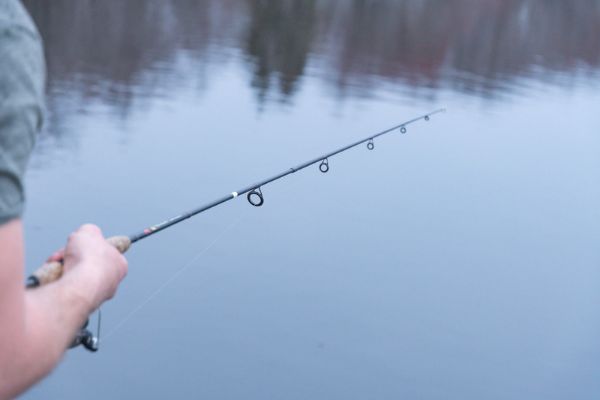Multi-piece fishing rods can get stuck together, which is annoying.
If you are reading this, you probably want to separate your fishing rod, not read an article so I will keep it short and to the point.
This guide will provide five methods that can be used to separate virtually any rod.
First, two things to avoid
Do not use the rod guides, handle or reel seat to pull or push against.
The guides and handle might seem strong and rigid compared with the smooth blank, but they are easily damaged.
Do not bend the rod when trying to separate it.
Just grip the blank, and pull straight. Maybe with a few twists. Why do rods get stuck?
Rods get stuck for two main reasons.
- Changes in temperature cause the sections to expand/shrink
- Sand or other dirt has become stuck in the connection causing it to be stuck.
How to prevent rods from becoming stuck together.
Prevention is better than cure. Here are a couple of tips to reduce the chance of your rods getting stuck together.
- Make sure both sections are clean before joining them.
- Applying a little ferrule or bee wax can help lubricate the joint preventing the chance of it sticking
How to free stuck fishing rods?
1) Wear latex gloves aka dishwashing gloves to improve grip.
Fishing rods typically have a smooth finish, making them hard to grip firmly.
One of the simplest ways to increase the strength of your grip is to wear a basic pair of dishwashing gloves.
They are textured and are designed for holding onto slippery plates. The simple act of wearing gloves often allows for enough additional grip to pull free two stuck rod sections.
When my rods are stuck together at home, this is always my first option.
It is also possible to wear latex gloves while using any of the following methods.
2) Get a friend to assist.
Two hands are stronger than one, and four are stronger than two.
To get an even distribution of power, it is best for each person to place one hand on both sides of the ferrule. Then pull in harmony in a straight line. Do not bend the rod while pulling.
If each person takes one side, then you are simply playing tug of war with the rod, and the stronger person might even start pulling the weaker of the two off balance.
3) Reduce the temperature of the connection.
Changes in temperature can often cause rod sections to expand or shrink resulting in the two pieces becoming stuck together. So by lowering the temperature it is possible to get the material to shrink every so slightly freeing the rod.
Many guides suggest placing the rod in icy water for a few minutes to lower the temperature, Now I do not have a container big enough to soak my rod in. So this advice is pretty useless.
A better option is to place some wet paper towels into the freezer for about half an hour. Then take the paper towels out of the freezer and wrap them around the stuck ferrule and leave them there for a few minutes. Afterward, the two sections should separate easily.
4) Hold the rod behind your knees and push out with your thighs
Disclaimer, I can not get this method to work for me. But others rave about it.
Position the rod behind your knees, and securely hold the rod on each side of the ferrule. Then simply push your thighs outwards forcing your hands apart.
Our thigh muscles are much stronger than our hand muscles and this extra power is often enough to separate rods. If your hands keep slipping, consider using latex gloves to improve your grip.
Here is a video that shows how it is done. Maybe I do it wrong, but it never works for me.
5) Use a penetrating lubricant to free the rod.
I left this one until second to last, because it runs the risk of making your rod blank even more slippery.
The method is to spray a little lubricant (wd-40) into the opening of the connection and hope that it reduces friction enough for brute force to separate the rod.
Just make sure to keep the lubricant off the blank itself.
6) Soak it in the river/lake/sea
This is the last resort, maybe you are at the parking lot, and no matter what you try. You can not get the rod apart.
Sometimes, soaking it in water does the trick. It could work for various reasons, maybe the water cools the rod enough, or maybe it works as a ‘lubricant’ and dislodged whatever was causing the rod to seize.
If you soak your rod in the sea, make sure to give it a good freshwater rinse afterward to prevent rust from forming on the guides/reel seat.

